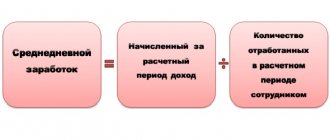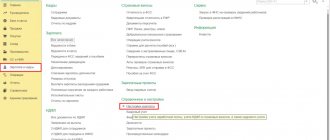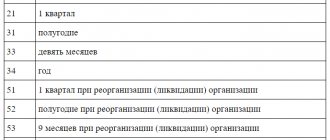We establish rules for calculating bonuses for the quarter
Bonuses paid quarterly are characterized by the following points:
- inclusion in the wage system used by the employer, i.e., thereby equating quarterly bonuses to wages (Article 129 of the Labor Code of the Russian Federation);
- the presence of an undoubted connection with the results of labor activity of each individual employee during the bonus period;
- systematic (regular) accrual;
- attitude towards all members of the workforce or the vast majority of them;
- dependence of the possibility of accrual on the overall results of the employer’s financial and economic activities for the bonus period;
- compulsory accrual to the employee if all the conditions that give him the right to receive bonuses are met.
The inclusion of bonuses in the wage system and the need to develop bonus rules common to the entire team require the employer to create internal regulations (Article 135 of the Labor Code of the Russian Federation) establishing:
- the structure of the wage system, for which documents such as wage regulations or a collective agreement are created;
- employee incentive system, which can be covered both in documents devoted to the remuneration system and in a separate document called the provision on incentive payments (on incentives, on bonuses).
The regulations on incentives in relation to bonuses should reflect:
- a list of all types of bonuses used by the employer;
- frequency of payment of bonuses of each type;
- the range of employees entitled to receive each type of bonus;
- conditions under which the accrual of bonuses becomes possible;
- a system for assessing the labor participation of each employee in the general labor process and translating it into specific bonus amounts;
- description of the procedure for reviewing the results of assessing the labor participation of each employee;
- criteria under which an employee is deprived of a bonus (deprivation of bonuses);
- a procedure that allows an employee to challenge the evaluation of his work performance.
The employer can establish the possibility of simultaneous accrual of several types of quarterly bonuses. But they must differ in the reason (ground) for the bonus. Moreover, each type of bonus may have its own circle of rewarded employees, its own conditions for accrual, its own evaluation system and its own grounds for depreciation.
Possible methods for calculating quarterly bonuses
The procedure for calculating the quarterly bonus, as well as the incentive system itself, is developed by the employer independently. The following options for determining the specific amount of the bonus may be considered:
- by calculation according to the formula established in the bonus regulations, summing up the bonus indicators assessed in monetary terms, which serve to assess the employee’s participation in the labor process;
- as a percentage of actually accrued earnings for the period;
- in a fixed amount that serves as a salary supplement;
- as a percentage of salary.
The first of the listed options most fully reflects the employee’s participation in the labor process. But it also turns out to be the most labor-intensive. Therefore, most employers prefer not to use it and resort to the remaining methods that are quite simple from a mathematical point of view.
But even these seemingly simple methods have their pitfalls.
Grounds for payment of bonus
How is the quarterly bonus paid? Quarterly incentives are issued no more often than once every three working months. The basis for such incentives may be the proper completion of all production tasks.
When the plan is exceeded, the payment can be increased if such a condition is reflected in the contract. As a rule, we can talk about percentages of official salaries, and not about fixed amounts.
Can the quarterly bonus be deprived? What usually happens is that bonuses are strictly tied to the profitability of the institution’s activities. In the event that performance data is low, no cash bonus is given. The employer cannot be subject to any penalties for this.
We calculate bonuses based on actual earnings
The most understandable, fairly simple and does not require additional processing of accrual data for subsequent application is to calculate the bonus as a percentage of actual earnings. It allows you to directly take into account when calculating bonuses the time actually worked by the employee during the bonus period (since actual earnings depend on the time worked), which will subsequently turn out to be important for taking these accruals into account in calculating the average earnings.
For this method of assessing the amount of bonuses, the provisions on incentive payments may establish two options for determining actual earnings:
- as the entire volume of actual wages accrued during the bonus period;
- as the average monthly salary, calculated based on bonus quarter data.
To calculate the bonus according to the first option, it is necessary to sum up the entire salary of the employee actually accrued to him for all months of the billing quarter, also including in this salary the amount of monthly bonuses. And then multiply the resulting value by the percentage indicated in the incentive regulations as applied to the quarterly bonus of the corresponding type.
To calculate the second option, the percentage related to the corresponding bonus will need to be applied to the calculated average monthly salary for the bonus quarter. The value of the average monthly salary in this case is obtained by dividing by 3 the total amount of the employee’s salary actually accrued to him for all months of the billing quarter, including monthly bonuses in the total amount.
Hourly wage
For hourly paid employees, bonuses are calculated as follows:
- the average earnings for the last three months are multiplied by the percentage of the bonus payment;
- wages ready for payment are added, as well as the necessary regional coefficients;
- the amount of income tax is deducted;
- the salary amount is obtained taking into account the quarterly bonus.
A rather convenient way is to calculate a quarterly bonus for the personnel of a specific organization, or one employee, through the use of 1C software. A patch to this tool called “Salary and HR Management” is especially suitable for such purposes.
Calculation of a premium set at a fixed amount
The accrual of a bonus in a fixed amount may also have options depending on what conditions are specified in the bonus regulations regarding this bonus. It is possible to establish such calculation conditions when the fixed amount is:
- accrued in full regardless of the time the employee is actually present at work during the bonus period;
- paid in proportion to actually worked for the period of time in question;
- is not paid for a month not fully worked.
In the first version of the calculation, in fact, no calculation is required. The bonus is simply awarded in the agreed amount.
For the second option, it will be necessary to determine what proportion of the time actually worked by the employee in the total working time attributable to the bonus quarter. And then multiply the resulting ratio by the total amount of the fixed premium.
According to the third option, to calculate the amount of the bonus for the quarter, the total amount of the fixed bonus must be divided by 3 and multiplied by 2.
How to calculate quarterly bonus from salary
A quarterly bonus calculated from salary is defined as a percentage of the employee’s salary and, at first glance, is not much different from a bonus set at a fixed amount. However, it has its own characteristics:
- the accrual base (salary) may change;
- for regions where a regional salary coefficient applies, this coefficient will have to be applied to the amount of the bonus calculated from the salary.
Just like a bonus accrued in a fixed amount, a bonus calculated from a salary, according to the conditions included in the incentive provision, may be linked to the actual time worked or not accrued for an incompletely worked month and in these cases will be calculated accordingly:
- taking into account the share of time actually worked by the employee in the total working time attributable to the bonus quarter;
- by dividing the total calculated premium amount by 3 and multiplying by 2.
Taxation of quarterly bonus
The inclusion of a quarterly bonus in the wage system clearly requires that its amount be subject to all salary taxes: personal income tax and insurance contributions. But these payments will also have to be calculated even in cases where the quarterly bonus:
- not included in the wage system;
- accrued on grounds not related to the employee’s work activity.
In terms of personal income tax, this requires clause 1 of Art. 210 of the Tax Code of the Russian Federation, and in relation to insurance premiums - clause 1 of Art. 420 Tax Code of the Russian Federation IP. 1 tbsp. 20.1 of the Law “On Compulsory Social Insurance against Accidents...” dated July 24, 1998 No. 125-FZ.
Insurance premiums accrued for premiums not related to work activities can be included in expenses taken into account when calculating the profit base (subclause 49, clause 1, article 264 of the Tax Code of the Russian Federation, letter of the Ministry of Finance of Russia dated April 2, 2010 No. 03-03-06 /1/220), despite the fact that such a bonus itself is not included in expenses for calculating the profit base.
Example
As part of the example of calculating a bonus, we should consider the case of its accrual for an individual employee. For example, the salary of an employee of a certain institution for one month will be equal to forty thousand rubles. The internal Regulations established a bonus of seventy percent of the total salary. In the first quarter, the employee worked forty-five days, but, according to the schedule, their number turned out to be fifty-six. In such a situation, the payment amount will be calculated as follows: 40 thousand x 70% / 56 x 45 = 22.5 thousand. Income tax is deducted from the final amount. Transfers to various funds are considered exactly the same.
In the same way, it is also possible to accrue bonuses to any employee. It is only important to know the established percentage of time, the number of days worked and their number according to the schedule. The quarterly bonus in 6-NDFL is displayed.
Accounting for quarterly bonuses in calculating average earnings
The rules for calculating average earnings are established by Art. 139 of the Labor Code of the Russian Federation and the Regulations on the specifics of the procedure for calculating average wages, approved by Decree of the Government of the Russian Federation dated December 24, 2007 No. 922 (hereinafter referred to as the Regulations).
Art. 139 of the Labor Code of the Russian Federation indicates the need to take into account in this calculation all payments that form the applicable wage system, regardless of their sources, and determines the period for which data is taken for calculation.
The Regulations more specifically describe the procedure for including each type of income in the calculation and the rules for implementing settlement procedures for situations:
- not the entire calculation period worked;
- lack of income during the calculation period;
- summarized accounting of work time;
- increase in salaries (tariff rates).
The peculiarities of taking into account bonuses are separately indicated. As a general rule for bonuses, a rule has been established (clause 15 of the Regulations) on the inclusion in the determination of average earnings of their amounts, taking into account the time of actual work for the calculation period, if not all of the latter has been worked or there are periods excluded from the calculation. If at the time of calculating the bonus the time of actual work was taken into account, then this rule does not apply.
If the time of actual work was not taken into account when calculating the bonus, then you will have to calculate by calculation that part of the bonus that can be taken into account. This is done by multiplying the bonus amount by the ratio of the time actually worked for the billing period in working days to the total number of working days in this period (letter of the Ministry of Health and Social Development of the Russian Federation dated June 26, 2008 No. 2337-17).
Directly related to quarterly bonuses is another rule (clause 15 of the Regulations), which prescribes bonuses accrued over a period of more than a month to be taken into account in the calculation:
- in their actual amount for each bonus basis, if the period for calculating bonuses is not longer than the period for calculating average earnings;
- in the amount of the portion of the bonus attributable to each month of the calculation period, if the period for calculating the bonus is longer than the period for calculating average earnings.
Thus, the bonus for the quarter is taken into account when calculating average earnings when this bonus:
- is an integral part of the wage system;
- has calculation rules established by internal regulations;
- accrued in the period of calculating average earnings;
- is not a duplicate payment of the same frequency on a similar basis in the same period;
- accrued taking into account the share of actual working time or recalculated in proportion to such share for the period of calculation of average earnings.
The question of taking into account the full or partial amount of the premium will depend on:
- whether the period for calculating average earnings has been completed in full or not;
- Whether or not the period for calculating the premium falls entirely within the calculation period;
- whether the share of actual work time is taken into account when calculating bonuses.
The full amount of the bonus for the quarter can be taken into account in the following situations:
- The entire calculation period has been worked out. In this case, neither the period for which the bonus was accrued nor the fact of taking into account or not taking into account the share of working time when calculating it turns out to be of no importance;
- the entire calculation period was not worked out, but the quarter to which the bonus relates was fully included in it, and when calculating bonuses, the share of the working time was taken into account.
It will be necessary to recalculate the amount of bonuses in proportion to the proportion of time actually worked in the calculation period, when the latter turns out to be worked not in its entirety, but in the quarter for which the bonus was calculated:
- everything is included in the pay period, but bonuses were accrued without taking into account the time of actual work;
- is not included in the calculation period or is only partially included in it. In this case, the fact of taking into account or not taking into account the share of actual working time when calculating the bonus will not play a role.
Dependence on factors
Premium calculations depend on many different factors, all of which must be taken into account. Most often, it happens that the bonus is drawn up in relation to a specifically worked period of time. Almost all institutions that are interested in the productivity of their enterprises issue such bonuses.
For example, the payment can be calculated using the following formula: the tariff rate is divided by one month, which is subsequently multiplied by the time worked in days. The last indicator is taken from the timesheet, which takes into account working hours. Let's look at an example of calculating a quarterly bonus.







